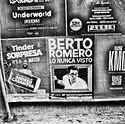MVNelson
Member
I got started learning how to do kallitype printing as a cheaper method of calibrating my workflow for making pt/pd prints using digital negatives and TrueBW RIP and a Canon iPF5000 printer. The the assumption was that making a kallitype print was easier, more economical and the results are transferrable to pure Palladium printing ( use the same negative) because of similar DR of process. Lastly I assumed that the kallitype aesthetically couldn't compare favorably to palladium print from the same source. What has my experience taught me thus far?
1) making a high quality kallitype compared to a palladium print is not easier or more "straight forward". A few more steps, more variables, and a little more work to get archival results.
2) more economical, a qualified yes. The coating solution is considerably cheaper (Ag-N03 vs Pd/Pt). This helps both form monetary and psychological points of view. I seem to be a whole lot more generous with redoing things especially while testing. Also more inclined to print a bit bigger. On the other hand toning is highly suggested for archival purposes so there is a cost for pt, pd or gold solutions. The cost of toner solutions a considerably less than using the same materials as coating solutions.
3) transferability is also a qualified yes. My DR for kallitype has settled out at 2.2. Digital negatives made for kallitype will "fall" on the pure palladium
coated paper quite well. The qualification is that it seems that kallitype is chemically more sensitive to paper characteristics and all papers suitable to Pd printing are not necessarily good for Kallitype. Also developers are somewhat transferable but it seems that "most" seem to use Pot. Ox. for Pd and Na. citrate for kallitype. I kinda like ammonium citrate at times for Pd . As an aside, recently someone "helped" me do a cleanup and accidentally dumped a liter of kalli-Black (Bostick&Sullivan) developer(Na-acetate) with a liter of ammonium citrate! I knew something was wrong when I now had 2 liters of milky grayish solution. Well, being curious, I used it in my last kallitype printing session. The prints are in the gallery. Not bad, not bad( for a newbie).
4) lastly, I was interested to see that my kallitype prints have begun to rival my Pt/Pd prints aesthetically and technically. In fact my palladium toned kallitypes look like ... well like palladium prints! Which would look better if I made 2 prints from the same digital negative? I don't know because I have not done that test.
My conclusion, kallitype printing can stand on its own. What started off as a cheap alternative has become a new tool in my chest for making expressive prints. Its fun too and the thought of using less costly coating metals enhances the experience for me.
Miles
sorry for the long winded diatribe but felt like writing this a.m. while paper is drying.
1) making a high quality kallitype compared to a palladium print is not easier or more "straight forward". A few more steps, more variables, and a little more work to get archival results.
2) more economical, a qualified yes. The coating solution is considerably cheaper (Ag-N03 vs Pd/Pt). This helps both form monetary and psychological points of view. I seem to be a whole lot more generous with redoing things especially while testing. Also more inclined to print a bit bigger. On the other hand toning is highly suggested for archival purposes so there is a cost for pt, pd or gold solutions. The cost of toner solutions a considerably less than using the same materials as coating solutions.
3) transferability is also a qualified yes. My DR for kallitype has settled out at 2.2. Digital negatives made for kallitype will "fall" on the pure palladium
coated paper quite well. The qualification is that it seems that kallitype is chemically more sensitive to paper characteristics and all papers suitable to Pd printing are not necessarily good for Kallitype. Also developers are somewhat transferable but it seems that "most" seem to use Pot. Ox. for Pd and Na. citrate for kallitype. I kinda like ammonium citrate at times for Pd . As an aside, recently someone "helped" me do a cleanup and accidentally dumped a liter of kalli-Black (Bostick&Sullivan) developer(Na-acetate) with a liter of ammonium citrate! I knew something was wrong when I now had 2 liters of milky grayish solution. Well, being curious, I used it in my last kallitype printing session. The prints are in the gallery. Not bad, not bad( for a newbie).
4) lastly, I was interested to see that my kallitype prints have begun to rival my Pt/Pd prints aesthetically and technically. In fact my palladium toned kallitypes look like ... well like palladium prints! Which would look better if I made 2 prints from the same digital negative? I don't know because I have not done that test.
My conclusion, kallitype printing can stand on its own. What started off as a cheap alternative has become a new tool in my chest for making expressive prints. Its fun too and the thought of using less costly coating metals enhances the experience for me.
Miles
sorry for the long winded diatribe but felt like writing this a.m. while paper is drying.
Last edited by a moderator:






